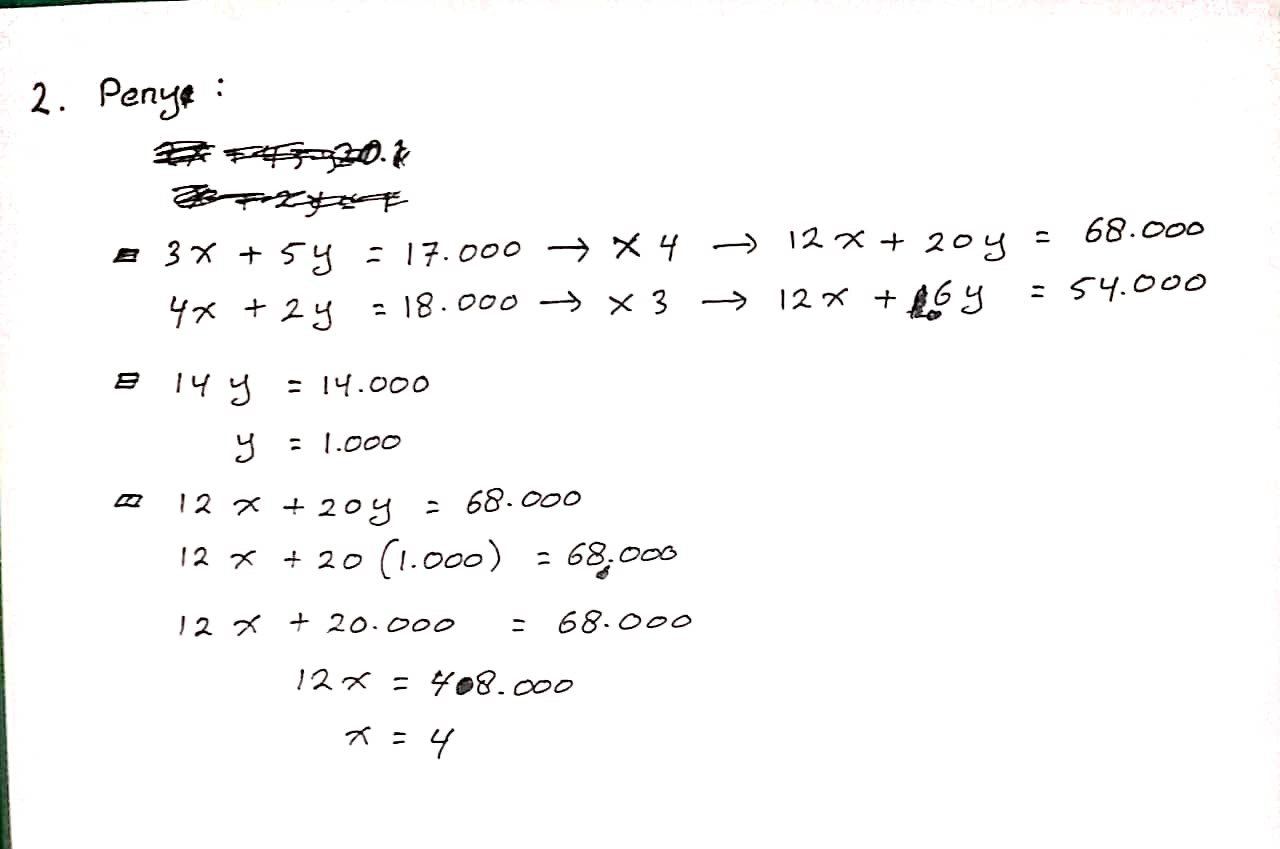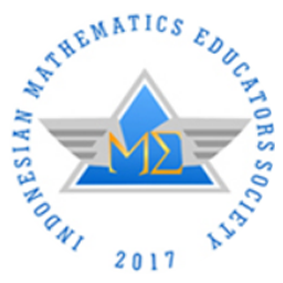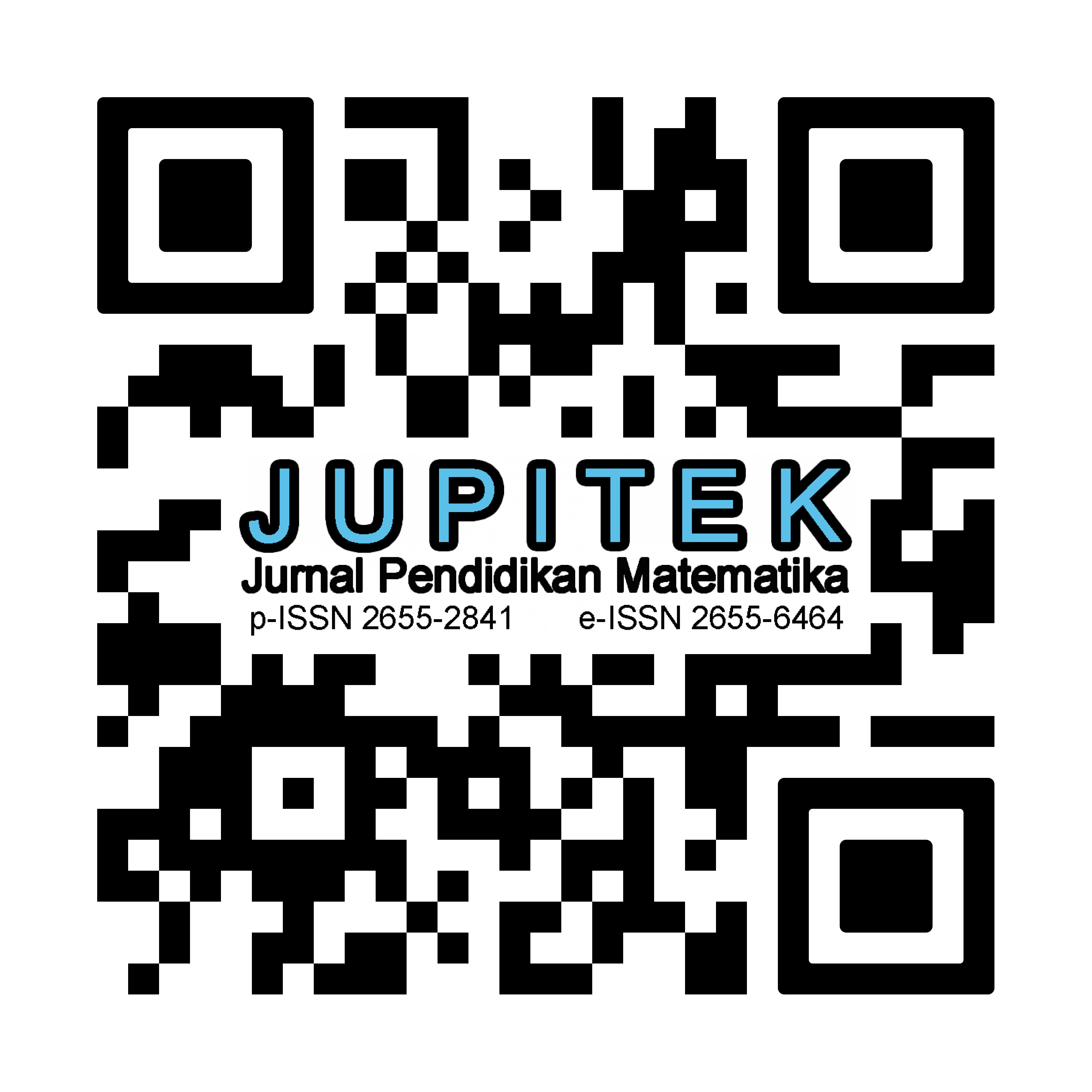STUDENT’S MISTAKES IN SOLVING PROBLEM BASED ON WATSON’S CRITERIA AND LEARNING STYLE
Abstract
This study aims to determine the types of errors students face when solving math problems. First, review the error types based on Watson's criteria and student learning styles. This study uses an explanatory sequential design model. Data analysis techniques include Quantitative data analysis techniques, descriptive statistics, and inferential statistics. At the same time, the qualitative data analysis techniques include; data reduction, data presentation, and conclusion. The results showed that the errors based on Watson's criteria and learning styles obtained were based on student responses, including; Inappropriate Data 40%, Omitted Conclusion 20%, Response Level Conflict 40%, and Above Other 40%. Furthermore, the types of errors obtained in classroom learning include Inappropriate Data 25%, Omitted Conclusion 50%, and Skill Hierarchy Problems 25%. In the visual learning pattern, there are five error classes: Inappropriate Data 9%, Omitted Conclusion 55%, Response Level Conflict 18%, Skill Hierarchy Problem 27%, and Above Other 18%. Several factors influence the error, including; the decline in students' motivation, interest, and thinking skills. Efforts can be made to minimize student errors, including increasing practice on story questions and eliminating students' negative mindset towards learning mathematics
Downloads
References
Aini, N. R., Syafril, S., Netriwati, N., Pahrudin, A., Rahayu, T., & Puspasari, V. (2019). Problem-Based Learning for Critical Thinking Skills in Mathematics. Journal of Physics: Conference Series, 1155(1). https://doi.org/10.1088/1742-6596/1155/1/012026
Andriani, S. P., Triyanto, T., & Nurhasanah, F. (2021). DEFRAGMENTATION THINKING STRUCTURE TO OVERCOME ERRORS IN ADDRESSING MATHEMATICAL PROBLEM. AKSIOMA: Jurnal Program Studi Pendidikan Matematika, 10(1). https://doi.org/10.24127/ajpm.v10i1.3441
Auria, F. D. (2019). Nuclear fission : From E . Fermi to Adm . Rickover , to industrial exploitation , to nowadays challenges. Advancement in Scientific and Engineering Research, 4(1), 17–30. https://doi.org/10.33495/aser
Bagni, G. T. (2004). INFINITE SERIES FROM HISTORY TO MATHEMATICS EDUCATION.
Boote, S. K., & Boote, D. N. (2018). ABC problem in elementary mathematics education: Arithmetic before comprehension. Journal of Mathematics Teacher Education, 21(2), 99–122. https://doi.org/10.1007/s10857-016-9350-2
Brams, S., Ziv, G., Hooge, I. T. C., Levin, O., De Brouwere, T., Verschakelen, J., Dauwe, S., Williams, A. M., Wagemans, J., & Helsen, W. F. (2020). Focal lung pathology detection in radiology: Is there an effect of experience on visual search behavior? Attention, Perception, and Psychophysics, 82(6). https://doi.org/10.3758/s13414-020-02033-y
Brown, R. E. (2010). Guest Editorial … Tensions Faced by Mathematics Professional Developers. 20(1), 3–7.
Buhaerah, B. (2013). THE DEVELOPMENT INSTRUMENT OF PROBLEM BASED INSTRUCTION ON STATISTICS SUBJECT IN CLASS OF SMP. Jurnal Daya Matematis. https://doi.org/10.26858/jds.v1i1.3314
Cahyati, H., Muin, A., & Musyrifah, E. (2018). Efektivitas Teknik SCAMPER dalam Mengembangkan Kemampuan Berpikir Kreatif Matematis Siswa. Journal of Medives : Journal of Mathematics Education IKIP Veteran Semarang, 2(2), 173. https://doi.org/10.31331/medives.v2i2.641
Cenberci, S. (2018). The Investigation of the Creative Thinking Tendency of Prospective Mathematics Teachers in Terms of Different Variables. Journal of Education and Training Studies, 6(9), 78. https://doi.org/10.11114/jets.v6i9.3434
Cui, Y., Wang, P., & Cui, Y. (2019). Cognitive control strategies from the perspective of perceptual conflict: An example of stereotyped information and counterstereotyped information. Acta Psychologica Sinica, 51(10). https://doi.org/10.3724/SP.J.1041.2019.01157
Daulay, K. R., & Ruhaimah, I. (2019). Polya theory to improve problem-solving skills. Journal of Physics: Conference Series, 1188(1). https://doi.org/10.1088/1742-6596/1188/1/012070
Engle, R. A., & Conant, F. R. (2002). Guiding Principles for Fostering Productive Disciplinary Engagement : Explaining an Emergent Argument in a Community of Learners Classroom. 20(4), 399–483.
Even, R., & Kvatinsky, T. (2010). What mathematics do teachers with contrasting teaching approaches address in probability lessons ? 207–222. https://doi.org/10.1007/s10649-010-9234-9
Faturohman, Y., & Amelia, S. (2020). ANALYSIS OF STUDENT DIFFICULTIES IN SOLVING TRIGONOMETRIC PROBLEM. Kalamatika: Jurnal Pendidikan Matematika, 5(1). https://doi.org/10.22236/kalamatika.vol5no1.2020pp1-8
Gregori, P., & Martínez, V. (2021). Challenges regarding scientific transcription in virtual office hours. Mathematics, 9(7). https://doi.org/10.3390/math9070699
Hadinugrahaningsih, T., Rahmawati, Y., & Ridwan, A. (2017). Developing 21st century skills in chemistry classrooms: Opportunities and challenges of STEAM integration. AIP Conference Proceedings, 1868(August). https://doi.org/10.1063/1.4995107
Hanum, O., Johar, R., & Yusrizal. (2021). Students’ thinking process in solving Higher-Order Thinking (HOT) problems through Aptitude Treatment Interaction (ATI) learning model. Journal of Physics: Conference Series, 1882(1). https://doi.org/10.1088/1742-6596/1882/1/012086
Hassan, K. El, & Madhum, G. (2007). Validating the Watson Glaser Critical Thinking Appraisal. Higher Education. https://doi.org/10.1007/s10734-006-9002-z
Hidayah, N., Budiman, M. A., & Cahyadi, F. (2020). Analisis Kesulitan Siswa Kelas V Dalam Memecahkan Masalah Matematika Pada Materi Operasi Hitung Pecahan. TSCJ, 3(1).
Hobri, Susanto, H. A., Hidayati, A., Susanto, & Warli. (2021). Exploring thinking process of students with mathematics learning disability in solving arithmetic problems. International Journal of Education in Mathematics, Science and Technology, 9(3). https://doi.org/10.46328/IJEMST.1684
Jose M Ocampo, J. (2018). Effecting Change on Students?? Critical Thinking in Problem Solving. Educare, 10(2), 109–118.
Kane, S. N., Mishra, A., & Dutta, A. K. (2016). Preface: International Conference on Recent Trends in Physics (ICRTP 2016). Journal of Physics: Conference Series, 755(1). https://doi.org/10.1088/1742-6596/755/1/011001
Lamb, J. H. (2010). Reading Grade Levels and Mathematics Assessment : An Analysis of Texas Mathematics Assessment Items and Their Reading Difficulty 1. 20(1), 22–34.
Maskur, R., Sumarno, Rahmawati, Y., Pradana, K., Syazali, M., Septian, A., & Palupi, E. K. (2020). The effectiveness of problem based learning and aptitude treatment interaction in improving mathematical creative thinking skills on curriculum 2013. European Journal of Educational Research, 9(1), 375–383. https://doi.org/10.12973/eu-jer.9.1.375
Mystakidis, S., Berki, E., Valtanen, J., & Amanatides, E. (2018). Towards a blended strategy for quality distance education lifelong learning courses: The patras model. Proceedings of the European Conference on E-Learning, ECEL.
Nelson, K. L., Rauter, C. M., & Cutucache, C. E. (2018). Life science undergraduate mentors in NE STEM 4U significantly outperform their peers in critical thinking skills. CBE Life Sciences Education, 17(4), 1–7. https://doi.org/10.1187/cbe.18-03-0038
P. Purba, E., Sinaga, B., Mukhtar, M., & Surya, E. (2017). Analysis of the Difficulties of the Mathematical Creative Thinking Process in the Application of Problem Based Learning Model. 104(Aisteel), 265–268. https://doi.org/10.2991/aisteel-17.2017.55
Panagiotis Kampylis, Pertti Saariluoma, E. B. (2011). Fostering Creative Thinking. Journal, Hellenic, 1, 46–64. https://doi.org/10.12681/eadd/23545
Purwanto, W. R., Waluya, S. B., Rochmad, & Wardono. (2020). Analysis of mathematical critical thinking ability in student learning style. Journal of Physics: Conference Series, 1511(1). https://doi.org/10.1088/1742-6596/1511/1/012057
Rini, D. S., Adisyahputra, & Sigit, D. V. (2020). Boosting student critical thinking ability through project based learning, motivation and visual, auditory, kinesthetic learning style: A study on Ecosystem Topic. Universal Journal of Educational Research, 8(4A). https://doi.org/10.13189/ujer.2020.081806
Rohman, S., Susanto, Hobri, Saiful, & Sahnawi. (2019). An analysis of students’ literacy ability in mathematics teaching with realistic mathematics education based on lesson study for learning community. Journal of Physics: Conference Series, 1265(1). https://doi.org/10.1088/1742-6596/1265/1/012004
Saputra, A. W., Minggi, I., & Djadir. (2021). The Identification of the Concept Understanding on Limit of Functions Based on Students’ Learning Styles in Mathematics Department at FMIPA UNM. Journal of Physics: Conference Series, 1899(1). https://doi.org/10.1088/1742-6596/1899/1/012130
Saputra, M. D., Joyoatmojo, S., Wardani, D. K., & Sangka, K. B. (2019). Developing critical-thinking skills through the collaboration of Jigsaw model with problem-based learning model. International Journal of Instruction, 12(1), 1077–1094. https://doi.org/10.29333/iji.2019.12169a
She, Z., Li, Q., Yang, B., & Yang, B. (2021). The double-edged sword effects of leader workaholism on team performance. Acta Psychologica Sinica, 53(9). https://doi.org/10.3724/SP.J.1041.2021.01018
Shriki, A. (2010). Working like real mathematicians : developing prospective teachers ’ awareness of mathematical creativity through generating new concepts. Educ Stud Math, 159–179. https://doi.org/10.1007/s10649-009-9212-2
Simonton, D. K. (2013). Creative problem solving as sequential BVSR: Exploration (total ignorance) versus elimination (informed guess). Thinking Skills and Creativity, 8(1), 1–10. https://doi.org/10.1016/j.tsc.2012.12.001
Skvortsova, S., Оnoprienko, O., & Romanyshyn, R. (2021). Mathematical Word Problems That Contain a Constant in the Course of Mathematics of Primary School in Ukraine. Journal of Vasyl Stefanyk Precarpathian National University, 8(1). https://doi.org/10.15330/jpnu.8.1.46-64
Sternod, L., & French, B. (2016). Test Review: Watson-Glaser II Critical Thinking Appraisal. Journal of Psychoeducational Assessment, 34(6), 607–611. https://doi.org/10.1177/0734282915622855
Sullivan, P., Clarke, D., & Clarke, B. (2009). Converting Mathematics Tasks to Learning Opportunities : An Important Aspect of Knowledge for Mathematics Teaching Plenty of Interesting Ideas but Where are the Interesting. 21(1), 85–105.
Surya, E., & Syahputra, E. (2017). Improving High-Level Thinking Skills by Development of Learning PBL Approach on the Learning Mathematics for Senior High School Students. International Education Studies, 10(8), 12. https://doi.org/10.5539/ies.v10n8p12
Warner, S., & Kaur, A. (2017). The Perceptions of Teachers and Students on a 21 st Century Mathematics Instructional Model. International Electronic Journal of Mathematics Educatione-ISSN:, 12(2), 193–215.
Wartono, W., Hudha, M. N., & Batlolona, J. R. (2018). How are the physics critical thinking skills of the students taught by using inquiry-discovery through empirical and theorethical overview? Eurasia Journal of Mathematics, Science and Technology Education, 14(2), 691–697. https://doi.org/10.12973/ejmste/80632
Zahara, M. N., Hendrayana, A., & Pamungkas, A. S. (2020). The Effect of Problem-based Learning Model Modified by Cognitive Load Theory on Mathematical Problem Solving Skills. Hipotenusa : Journal of Mathematical Society, 2(2). https://doi.org/10.18326/hipotenusa.v2i2.41-55
Zazkis, R., & Zazkis, D. (2010). The significance of mathematical knowledge in teaching elementary methods courses : perspectives of mathematics teacher educators. https://doi.org/10.1007/s10649-010-9268-z
Zhou, H., Lu, S., Chen, J., Wei, N., Wang, D., Lyu, H., Shi, C., & Hu, S. (2020). The landscape of cognitive function in recovered COVID-19 patients. Journal of Psychiatric Research, 129. https://doi.org/10.1016/j.jpsychires.2020.06.022

Copyright (c) 2022 Buhaerah Buhaerah, Kamaruzaman Jusoff, Muhammad Nasir, M S Dangnga

This work is licensed under a Creative Commons Attribution-NonCommercial-ShareAlike 4.0 International License.
License and Copyright Agreement
By submitting a manuscript to Jurnal Pendidikan Matematika (JUPITEK), the author(s) certify and agree to the following terms:
- Originality and Authority: The submitting author is authorized by all co-authors to enter into this agreement. The manuscript describes original work that has not been published previously in a peer-reviewed journal, nor is it under consideration for publication elsewhere.
- Approval: Its publication has been approved by all author(s) and by the responsible authorities of the institutions where the work was carried out.
- Rights: The authors secure the right to reproduce any material that has already been published or copyrighted elsewhere.
- Licensing and Copyright: Authors retain the copyright to their work.
- License Grant: The authors grant Jurnal Pendidikan Matematika (JUPITEK) the right of first publication, with the work simultaneously licensed under the Creative Commons Attribution-NonCommercial-ShareAlike 4.0 International (CC BY-NC-SA 4.0).
- Self-Archiving: Authors are permitted and encouraged to deposit the published version of their article in institutional repositories, on their personal websites, and other academic platforms, with proper acknowledgment of its initial publication in Jurnal Pendidikan Matematika (JUPITEK).





.png)


